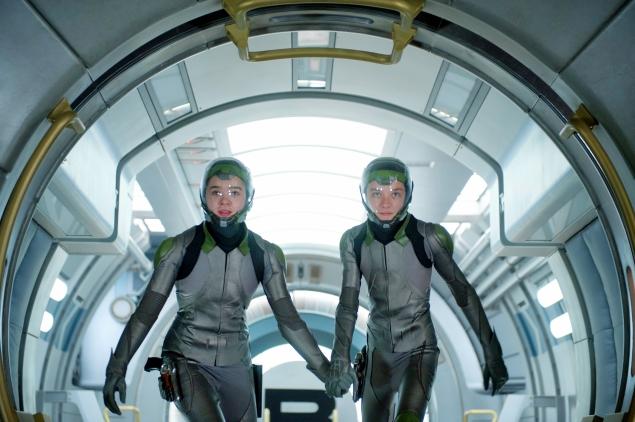
When a beloved book becomes a movie, immediately there are two camps, the hasn’t-reads and the has-reads. One is just trying to understand what’s going on and the other is critical down to the tiniest detail, evaluating the transition from page to screen. Director Gavin Hood’s “Ender’s Game” opened this past weekend, launching Orson Scott Card’s nearly thirty years old, Nebula Award-winning science fiction novel into an action-packed, glimmering CGI space adventure. Did Hood succeed in the transition? Ehh.
Expectations were high, particularly for the fans of the book and its sequels. “I received the ‘Ender’s Game’ box set as a Christmas gift a few years back, and once I started reading, I couldn’t put the books down,” said third-year graphic design student, Katie Bryl. “I loved the logic and the tension, and was constantly worrying about the characters and their choices and futures.”
The basic premise of “Ender’s Game” is a futuristic Earth where humans live in constant fear of the ant-like alien race, the Formics (or “Buggers”), and thus we train lethal super-genius children to become instinctive commanders in war. Andrew “Ender” Wiggin (played by “Hugo”’s Asa Butterfield) becomes the latest candidate and is whizzed off to space to Battle School, where strategy-obsessed military leaders pit him against other children and his own psyche to see if he’s the one who will defeat the Buggers once and for all. Battle School selects Ender for his temperament: his brother Peter is too violent, his sister Valentine is too compassionate and he may be the perfect balance of them both.
“Ender’s Game” is visually a glossy, eye-catching and violent film. The portrayal of space is never cheesy or cheap: the ships and stations are massive and believable, the game simulations (particularly the Mind Game) are surprisingly stunning and the Battle Room is a terrifying zero-gravity playscape for aggressive pre-teens with advanced weaponry. Like “The Hunger Games” in space, the movie earns its PG-13 rating with Ender beating other kids to a pulp regularly, but it’s careful to balance the book’s themes of necessary evils, of what it takes to be a leader and about compassion even for your enemy.
For fans of the books, it’ll do several scenes and characters justice, with Butterfield pulling a stoic performance and minor roles aced by Hailee Steinfeld as spitfire Petra Arkanian and Ben Kingsley as battle hero Mazer Rackham. Harrison Ford’s one-note, but the script doesn’t give him much to work with as the Ender-is-our-last-chance Colonel Graff. The movie’s 114 minutes passed slowly through a whole lot of material, an expansive intergalactic narrative that flows seamlessly in Card’s award-winner but feels clunky and anticlimactic on screen. Readers may wish to linger in Battle School, in the friendships Ender slowly builds, but he’s zipped from one development to the next with too much to cover in too short a time.
For non-readers, the narrative may seem like a total mess, without a clear climax or sense of conclusion. “The movie fails to connect the dots with the various storylines and characters,” says third-year advertising student Momo, who hadn’t read the book before seeing the film. “This is the kind of movie you watch on Netflix.”
She’s not wrong. The “Ender’s Game” you really need is on a bookshelf, and you can wait on this one in your Netflix queue.




















